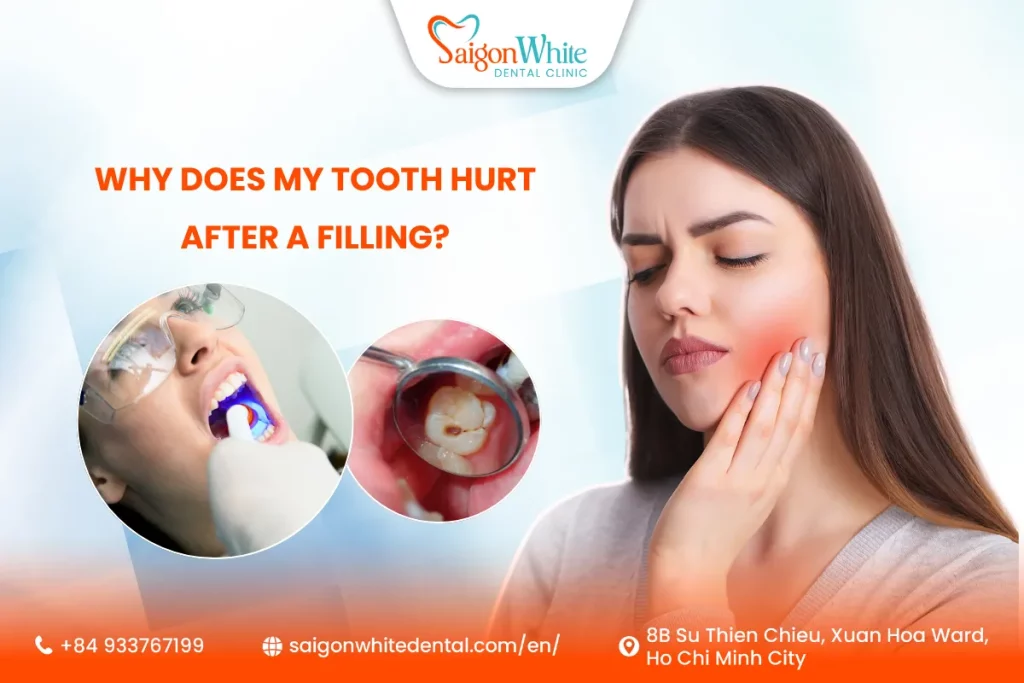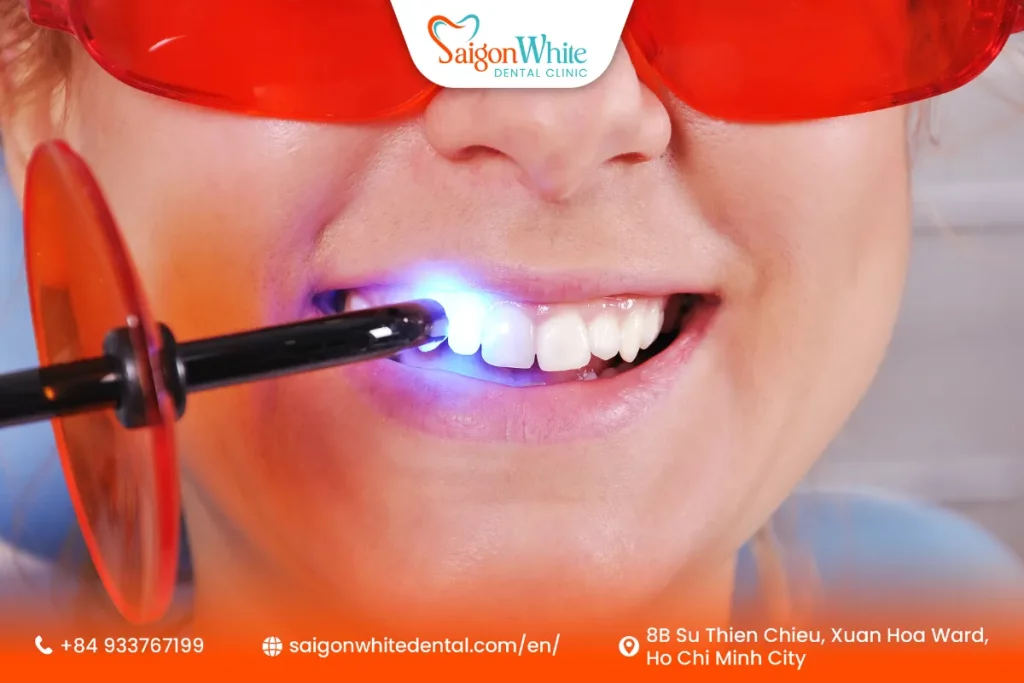Getting a dental filling is one of the most common procedures performed in modern dentistry. Whether you had a cavity, a chipped tooth, or an old filling replaced, the goal is always the same: restore function, protect the tooth, and eliminate pain.
But what if the pain starts—or continues—after your filling?
Tooth pain after a filling is something many people experience. Sometimes, it’s part of the normal healing process. Other times, it can indicate that something isn’t quite right. This article will explore the possible causes, what’s considered normal, how long pain should last, and when you should contact your dentist for help.

What Is a Dental Filling?
A dental filling is a restorative treatment used to repair minor tooth fractures, decay, or surface damage. When decay (a cavity) erodes a portion of your tooth, the dentist removes the affected material and fills the space with durable material to restore shape and strength.
Common types of fillings:
- Composite resin (tooth-colored): Aesthetic and popular for front teeth
- Amalgam (silver): Durable, but less commonly used due to aesthetics
- Ceramic or porcelain: Strong and stain-resistant
- Gold: Long-lasting but expensive and noticeable
What happens during the procedure?
- Local anesthesia to numb the area
- Removal of decayed material
- Cleaning and shaping the cavity
- Filling placement and hardening (often with a curing light)
- Bite adjustment and polishing
After the anesthesia wears off, it’s common to feel mild discomfort—but ongoing or sharp pain could signal something more.
Is Tooth Pain After a Filling Normal?
Yes—in many cases, some discomfort is normal.
Mild sensitivity to hot, cold, sweet, or pressure is a typical reaction, especially within the first few days. Your tooth and the surrounding nerve tissues may need time to adjust to the changes.
However, pain that is severe, sharp, or lasts more than a week could be a sign that something needs to be addressed.

Common Causes of Tooth Pain After a Filling
Understanding what’s behind the pain helps you know whether to wait or return to your dentist.
High Filling (Bite Too Tall)
One of the most common issues. If the filling sits higher than your natural bite, it puts excess pressure on the tooth when chewing. This can lead to jaw pain, soreness, or sensitivity when biting down.
🛠 Solution: Your dentist can easily adjust the filling height in just a few minutes.
Pulp Irritation or Inflammation
When a cavity is deep, the drilling process may come close to the nerve (pulp) of the tooth. This can cause temporary inflammation and result in sensitivity to temperature or pressure.
Typically improves in a few days to a couple of weeks.
3. Tooth Nerve Damage
In rare cases, the trauma from drilling or a very deep cavity can irritate or damage the nerve. If the pain is intense and doesn’t improve, a root canal may be required.
Cracked Tooth
Sometimes, the filling doesn’t cause the problem—it reveals one. If the tooth had a microscopic crack, the pressure from the procedure could worsen it, leading to pain when chewing.
X-rays or further examination may be needed to confirm.
Allergic Reaction (Uncommon)
A rare but possible issue is an allergic reaction to the filling material, particularly in amalgam (silver) fillings. Symptoms may include itching, swelling, or a rash.
Referred Pain
Your filled tooth may be fine, but your brain could misinterpret pain signals coming from nearby teeth. This is known as referred pain and typically resolves on its own.
Infection or Secondary Decay
If the decay wasn’t fully cleaned out or bacteria were left behind, it could cause an infection under the filling, leading to pain, swelling, and possibly a need for root canal therapy.
How Long Should Tooth Pain Last After a Filling?
Normal Healing Timeline:
- Minor sensitivity: 1–3 days
- Moderate discomfort (deep fillings): up to 2 weeks
- Pain that improves daily: Usually no concern
When to Worry:
- Pain gets worse, not better
- Sharp pain when biting or chewing
- Pain that lasts longer than 14 days
- Pain accompanied by swelling or fever
If your pain doesn’t gradually improve—or worsens—it’s time to go back to your dentist.
How to Relieve Tooth Pain After a Filling
While waiting for symptoms to settle, here are some ways to feel more comfortable:
Avoid That Side of Your Mouth
Chew on the opposite side for a few days to reduce pressure.
Stick to Soft, Neutral-Temperature Foods
Avoid extremely hot, cold, or hard foods. Go for soups, smoothies, and soft meals.
Use Desensitizing Toothpaste
Toothpaste like Sensodyne can reduce sensitivity over time.
Over-the-Counter Painkillers
Ibuprofen or acetaminophen can help reduce discomfort.
Saltwater Rinse
A warm saltwater rinse soothes the gums and promotes healing.
When to Contact Your Dentist
Don’t try to “tough it out” if you experience any of the following:
- Pain lasting more than two weeks
- Sharp or stabbing pain when biting
- Tooth feels uneven or “too tall”
- Fever, swelling, or discharge
- Pain that wakes you at night
At this point, your dentist may:
- Adjust the bite
- Replace the filling
- Recommend a root canal if the nerve is damaged
- Evaluate for cracks or deeper issues
Can a Filling Be Repaired or Replaced?
Yes! If the filling is the problem, it can often be:
- Smoothed or reshaped if too tall
- Replaced if poorly bonded or failed
- Re-examined with new X-rays
- Upgraded with a different material (e.g., switch from amalgam to composite)
In cases of deep nerve irritation, a root canal may be necessary to remove the inflamed pulp and save the tooth.
How to Prevent Post-Filling Pain in the Future
You can’t always avoid discomfort, but there are steps you can take:
✔ Choose a skilled, experienced dentist
Clinics like Saigon White Dental use modern techniques and materials to reduce post-op pain.
✔ Communicate with your dentist
Tell them if you’ve had sensitivity in the past or if you’re nervous. They can adjust their technique or material choice.
✔ Attend follow-ups
If you notice discomfort or bite issues, don’t hesitate to return. Bite adjustments are quick and can save you from ongoing pain.
✔ Practice good oral hygiene
Prevent cavities in the first place by brushing, flossing, and visiting your dentist regularly.
Conclusion
It’s natural to feel some sensitivity after getting a filling—but lingering or intense pain is not something to ignore.
Understanding the common causes of post-filling discomfort can help you take the right steps. Whether it’s just a high bite that needs adjusting or a deeper nerve issue, the sooner you get it checked, the easier it is to treat.
If you’ve recently had a filling and are concerned about ongoing tooth pain, the best course of action is to consult with a trusted dental professional. Early intervention can make all the difference.
Need a second opinion or follow-up care?
At Saigon White Dental, we:
- Use digital imaging for accurate diagnoses
- Offer pain-free filling procedures with advanced materials
- Speak English dental clinic, Korean, Japanese, Russian, and Vietnamese
- Provide fast appointments and transparent pricing
Address: Phường Xuân Hòa, HCMC
Website: saigonwhitedental.com/en/
Hotline / WhatsApp: +84933767199
Let us help you feel comfortable again—with expert care you can trust.

 Telegram
Telegram